Golden Age Superheroes - Captain Marvel
Captain Marvel, also known as Shazam, is a fictional superhero appearing in American comic books published by DC Comics. Artist C. C. Beck and writer Bill Parker created the character in 1939. Captain Marvel first appeared in Whiz Comics 02 (cover-dated Feb. 1940), published by Fawcett Comics. He is the alter ego of Billy Batson, a boy who, by speaking the magic word "Shazam", can transform himself into a costumed adult with the powers of superhuman strength, speed, flight, and other abilities.
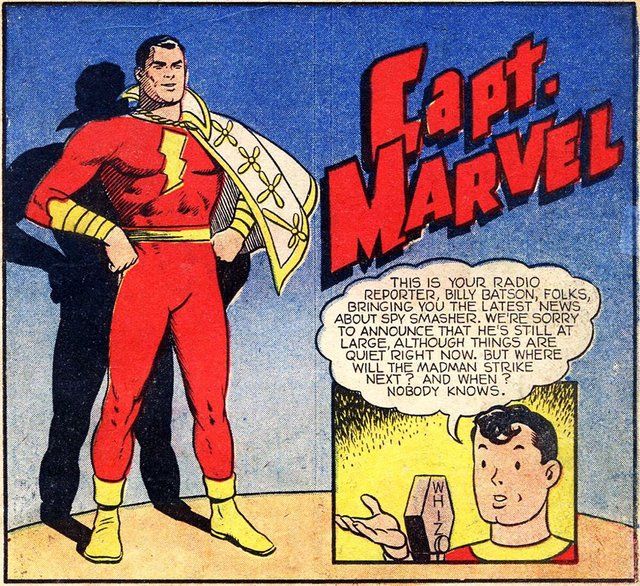
Based on book sales, the character was the most popular superhero of the 1940s, outselling even Superman. Fawcett expanded the franchise to include other "Marvels", primarily Marvel Family associates Mary Marvel and Captain Marvel Jr., who can harness Billy's powers as well. Captain Marvel was also the first comic book superhero to be adapted into film, in a 1941 Republic Pictures serial titled Adventures of Captain Marvel.
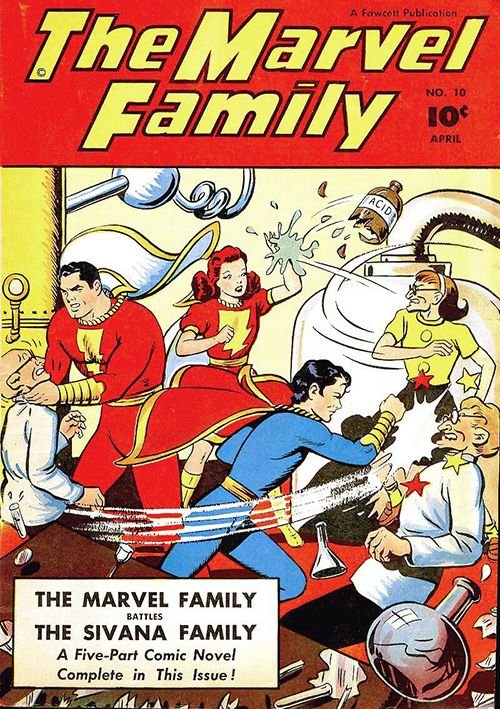
Fawcett ceased publishing Captain Marvel-related comics in 1953, partly because of a copyright infringement suit from DC Comics, alleging that Captain Marvel was a copy of Superman. In 1972, DC licensed the Marvel Family characters from Fawcett, and returned them to publication. By 1991, DC had acquired all rights to the characters. DC has since integrated Captain Marvel and the Marvel Family into their DC Universe and has attempted to revive the property several times, with mixed success. Due to trademark conflicts over another character named "Captain Marvel" owned by Marvel Comics since 1967, DC chose to publish the character's adventures in a comic book titled Shazam! for many years, leading many to assume that this was the character's name. DC later officially renamed the character "Shazam" when relaunching its comic book properties in 2011.
Publication history
Development and inspirations
After the success of National Comics' new superhero characters Superman and Batman, Fawcett Publications started its own comics division in 1939, recruiting writer Bill Parker to create several hero characters for the first title in their line, tentatively titled Flash Comics. Besides penning stories featuring Ibis the Invincible, Spy Smasher, Golden Arrow, Lance O'Casey, Scoop Smith, and Dan Dare for the new book, Parker also wrote a story about a team of six superheroes, each possessing a special power granted to them by a mythological figure.
Fawcett Comics' executive director Ralph Daigh decided it would be best to combine the team of six into one hero who would embody all six powers. Parker responded by creating a character he called "Captain Thunder". Staff artist Charles Clarence "C. C." Beck was recruited to design and illustrate Parker's story, rendering it in a direct, somewhat cartoony style that became his trademark. "When Bill Parker and I went to work on Fawcett’s first comic book in late 1939, we both saw how poorly written and illustrated the superhero comic books were," Beck told an interviewer. "We decided to give our reader a real comic book, drawn in comic-strip style and telling an imaginative story, based not on the hackneyed formulas of the pulp magazine, but going back to the old folk-tales and myths of classic times".
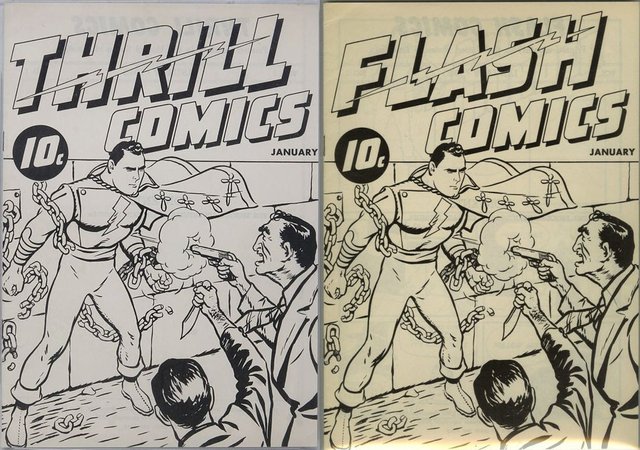
The first issue of the comic book, printed as both Flash Comics 01 and Thrill Comics 01, had a low-print run in the fall of 1939 as an ashcan copy created for advertising and trademark purposes. Shortly after its printing, however, Fawcett found it could not trademark "Captain Thunder", "Flash Comics", or "Thrill Comics", because all three names were already in use. Consequently, the book was renamed Whiz Comics, and Fawcett artist Pete Costanza suggested changing Captain Thunder's name to "Captain Marvelous", which the editors shortened to "Captain Marvel". The word balloons in the story were re-lettered to label the hero of the main story as "Captain Marvel". Whiz Comics 02 (cover-dated Feb. 1940) was published in late 1939.
Inspiration
Inspiration for Captain Marvel came from a number of sources. His visual appearance was modeled after that of Fred MacMurray, a popular American actor of the period, though comparisons with both Cary Grant and Jack Oakie were made as well. Fawcett Publications' founder, Wilford H. Fawcett, was nicknamed "Captain Billy", which inspired the name "Billy Batson" as well as Marvel's title. Fawcett's earliest magazine was titled Captain Billy's Whiz Bang, which inspired the title Whiz Comics. In addition, Fawcett took several of the elements that had made Superman the first popular comic book superhero (super-strength and speed, science-fiction stories, a mild-mannered reporter alter ego) and incorporated them into Captain Marvel. Fawcett's circulation director Roscoe Kent Fawcett recalled telling the staff, "Give me a Superman, only have his other identity be a 10- or 12-year-old boy rather than a man".
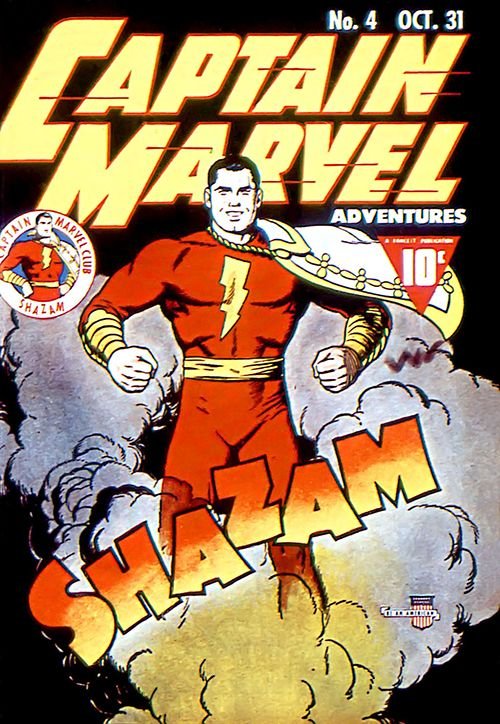
Introduction
In addition to introducing the main character and his alter ego, Captain Marvel's first adventure in Whiz Comics 02 also introduced his archenemy, the evil Doctor Sivana, and found Billy Batson talking his way into a job as an on-air radio reporter. Captain Marvel was an instant success, with Whiz Comics 02 selling over 500,000 copies. By 1941, he had his own solo series, Captain Marvel Adventures, while he continued to appear in Whiz Comics, as well as periodic appearances in other Fawcett books, including Master Comics.
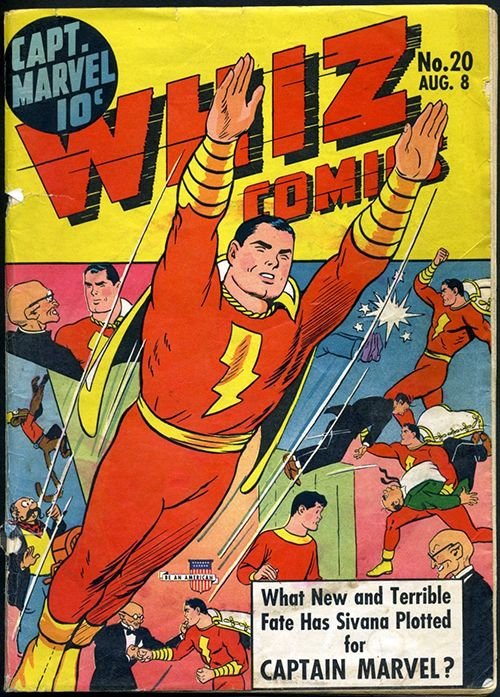
Through much of the Golden Age of Comic Books, Captain Marvel proved to be the most popular superhero character of the medium, and his comics outsold all others. Captain Marvel Adventures sold fourteen million copies in 1944, and was at one point being published bi-weekly with a circulation of 1.3 million copies an issue (proclaimed on the cover of issue 19 as being the "Largest Circulation of Any Comic Magazine"). Part of the reason for this popularity included the inherent wish-fulfillment appeal of the character to children, as well as the humorous and surreal quality of the stories. Billy Batson typically narrated each Captain Marvel story, speaking directly to his reading audience from his WHIZ radio microphone, relating each story from the perspective of a young boy.
Read - Whiz Comics 02
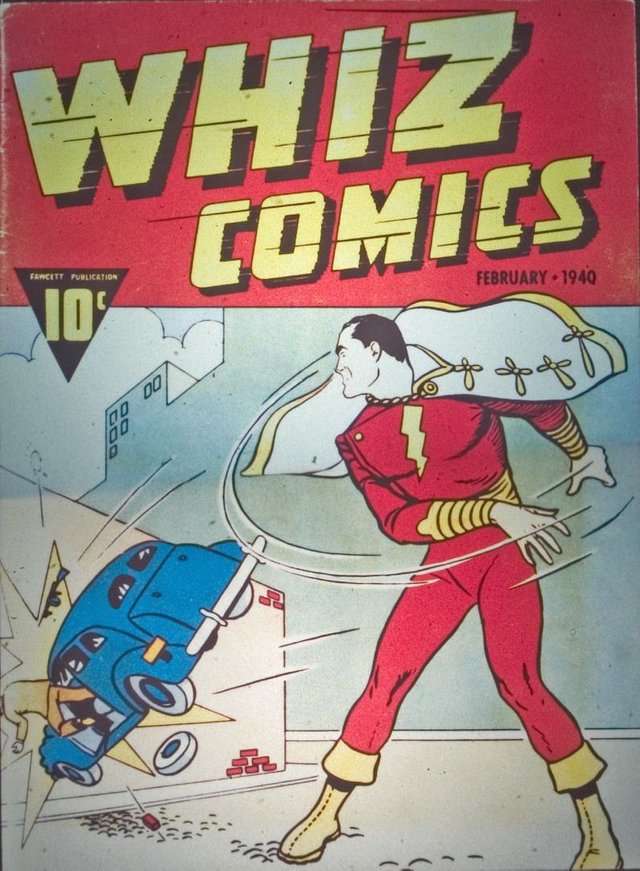
Read - Captain Marvel Adventures 01
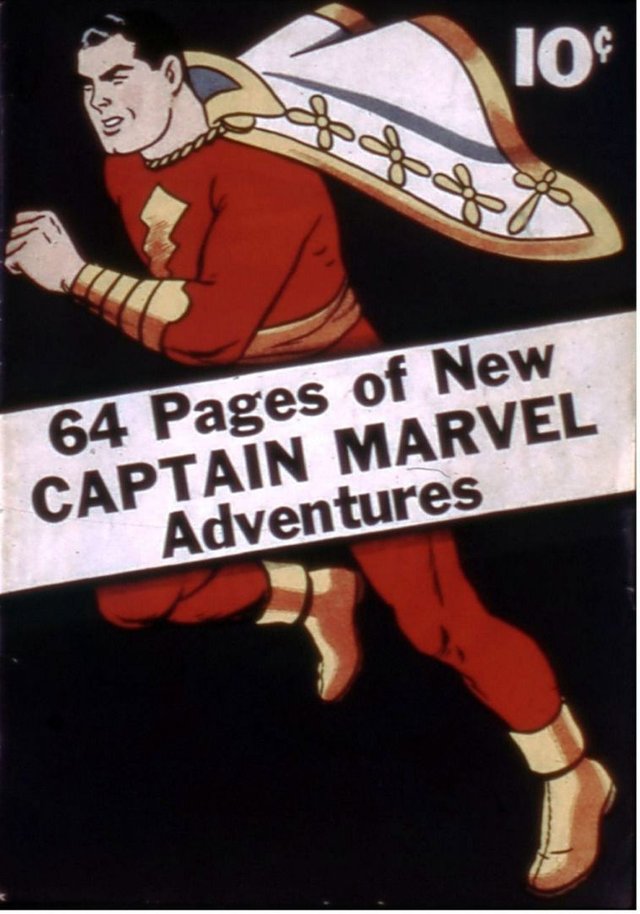
Read - Marvel Family 01
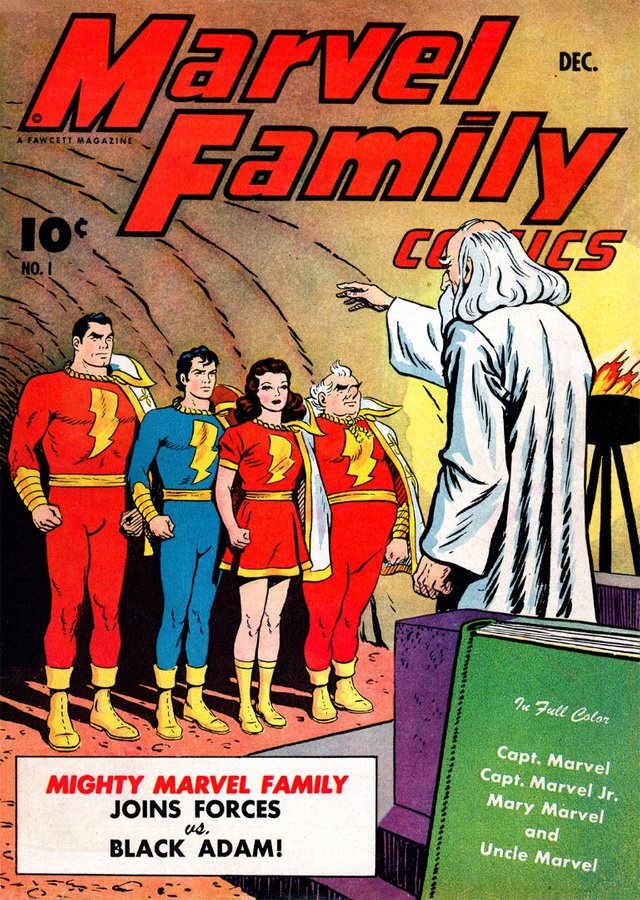
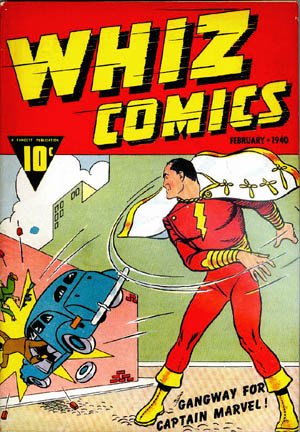
SHAZAM!!
@goldenage got you a $1.97 @minnowbooster upgoat, nice! (Image: pixabay.com)
Want a boost? Click here to read more!
Vamos ver se funciona?
1, 2, 3...
SHAZAM!
Mais uma vez! Agora com mais força...
SHAZAM!!
Very cool post! I remember reading comic books in my room for hours when i was a kid. Great times. Upvoted!